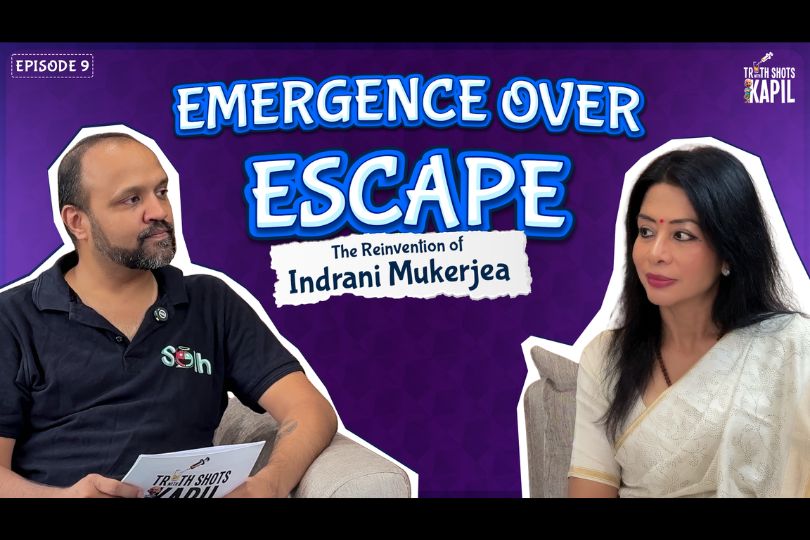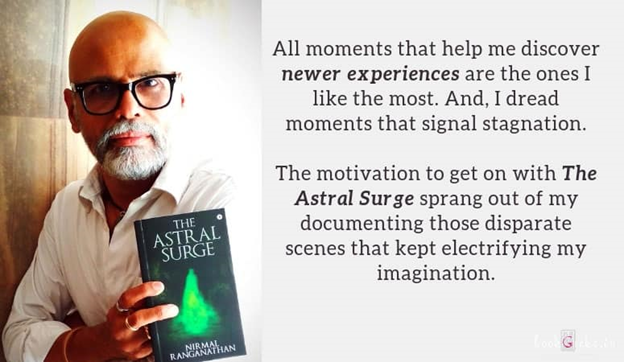Interview with Vayu Naidu Author of The Living Legend: Ramayana tales from far and near
Dr. Vayu Naidu, storyteller, writer, and academic, explores epics, nature, and transformation, blending oral traditions with contemporary relevance.on Nov 26, 2024

Dr Vayu Naidu’s PhD was in Epic Oral traditions of Ramayana and Mahabharata and experiments with Storytelling in western Theatre at The Workshop Theatre, School of English, The University of Leeds. She was founder of Vayu Naidu Intercultural Storytelling Theatre funded by Arts Council England. She created Apprentice Storytellers while a Post Doctoral Performing Arts Fellow at The University of Kent. She has effected change with Storytelling post-Tsunami with fishermen communities along the Chennai coast, with the NHS, in Prisons, with Women in Shelters and with Refugees and Asylum seekers. Stories are a way of healing and integrating self with location. She writes historical fiction, plays, voices audiobooks and is a performance Storyteller. She is Royal Literary Fund Fellow, Visiting Fellow at Royal Academy of Dramatic Art (RADA) teaching Indian Theatre, and is Professor of Practice at SOAS in the School of Arts.
Frontlist: In The Living Legend, you show Rama experiencing fear in the forest, which is a unique approach to his character. Why did you choose to focus on this aspect of his emotional journey, and how does this experience shape his transformation throughout the story?
Vayu: Writing about Rama in any time is a formidable task. He is so well-known throughout history and is a living legend in people's hearts and minds, whether they are familiar or unfamiliar with him. When you have such a well-known character who also represents the heroic ideal, it's challenging to even begin.
In The Living Legend, I wanted to start with Rama at sixteen years of age. This is the age, according to familiar accounts, when he entered Dandaka forest, led by Vishwamitra with Lakshmana accompanying them. It's also an age when years of learning and practice can be put into action in real-life situations, where the individual must exercise discrimination and judgment, making choices to protect the balance of Nature.
In the epic tradition, whether Indian or Greek, the hero is most tangible when the character is human, allowing for development as he encounters fear and summons courage. This gives the character space to develop an arc throughout the novel. Rama's unique characteristic is his constant self-reflection. From vulnerability, he grows, forcefully and steadily, to fight against injustice and restore balance in the world order. Many retellings of the Ramayana have preceded this one, including excellent ones, but I wanted to foreground and celebrate his transformation in relationships with Nature and all sentient beings.
Frontlist: Can you share your writing process for developing characters like Rama and Sita? How do you ensure that their journeys are both authentic to their roots and relevant to contemporary readers?
Vayu: One thing any storyteller and writer must remember when writing about characters like Rama and Sita is that they walk in the listener's and reader's imagination as they walk the earth. We grow with them as they grow from youth to adulthood. They encounter the unknown and respond to situations based on their Nature, training, and temperament. We read about the episodes as the story unfolds, but at a deeper level, we internalize the values they uphold in the face of danger. Sometimes, they are struck down and go through cycles of negative emotions, but with willpower, they pull themselves out and sacrifice for the greater good, which is awareness, Light, and infinity.
As a writer, it's my responsibility to follow the characters' thoughts, actions, and how they face consequences. That's what makes them relevant and, dare I say, truthful—to Nature, to Prakriti. In this book, I was inspired by the Advaitic principle of connectedness, which states that nothing is separate. This idea, unique to Indian thought, philosophy, and practice, is also universal across humanity, illustrating the human condition beyond cultural boundaries.
As a storyteller from both oral and written traditions, the philosophy must be woven into the story's fabric, not overtly drawing attention to itself. It takes understanding and work.
Frontlist: The book presents philosophical questions about duty and understanding one's purpose, particularly through Rama's reflections. How do you weave these philosophical elements into the narrative, and what insights do you hope readers will take away?
Vayu: In a global world, we share information, transform it into knowledge, and ideally grow in wisdom. This mirrors the essence of the Upanishads that Vishwamitra, Rishyasringa, Vasishta, and others introduced in the epic, resonating through forests, courts, and battlefields. Focus is essential. As we grow to understand our connectedness, vastness, and infinity, our ignorance fades, and we ascend from lower branches of understanding to higher branches of knowing the Truth (Taittreiya Upanishad). This is the light dispelling darkness, revealing the true meaning of duty - from the individual to the nucleus of the family, to study, to the community, to the world.
This story's relevance for contemporary readers is vital. Throughout history, storytellers have adapted the Ramayana to resonate with the social context of their times. The intention is for it to remain a platform for reflection and practice.
Frontlist: The forest plays a transformative role in the story, serving as more than just a backdrop. How did you conceptualize the relationship between the characters and Nature?
Vayu: The forest is where Valmiki begins, transforming from a wild being into a sage who experiences oneness with the forest. It's also where Rama overcomes his fear to vanquish the shape-shifting rakshasa. He realizes that the planet's life is at stake—if forests are destroyed, the entire ecosystem collapses. During exile with Sita, Rama encounters ordinary people and forges new relationships with Hanuman and Sugriva. The armies he leads are animals from the forest. These unique interactions with Nature represent fearlessness on a deeper level than typically portrayed.
Frontlist: Your previous novels, Sita's Ascent and The Sari of Surya Vilas, focus on women's narratives. How did your exploration of Sita's journey in your earlier work influence your depiction of her character in The Living Legend?
Vayu: In some sense, Sita in Sita's Ascent is an evolved version of herself. She is in exile and nurtures her son in a hermitage. The Sita of The Living Legend embodies the temperament of a pure element of fire. She is the driving force throughout the story, and I hope more readers find her resilience iconic.
Frontlist: In what ways has exploring epics like the Ramayana changed you personally? Has the process of engaging with such deep, transformative stories influenced your views on life, relationships, or spirituality?
Vayu: When I shared Valmiki's story in prison, one inmate later remarked, "A criminal creating poetry, composing an epic! That's great hope!" He was deeply moved by the story. Isn't that transformation—listening and reflecting? When WH Auden was asked, "What is the purpose of poetry?" he replied that poetry empowers the human imagination to heal itself, particularly in times of peace. Story, poetry, and the arts enable us to cultivate emotional intelligence and embrace the spirit's great expansion.
Exploring such epics and adapting them for children, young adults, and all ages has allowed me to see their multi-layered textures and appreciate the festival of Diwali, which brings Light in times of darkness. In diaspora communities, Diwali is celebrated widely—across Britain, Canada, Australia, and elsewhere. It brings Light, reconciliation, and self-reflection. This epic has traveled through forests and across seas, making it a world epic. That, for me, is transformation—one that entered my life unexpectedly and now allows me to share it with renewed significance. Over the years, Ramayana's many travelers have encountered one another, exchanged insights, and continued on, holding the thread.
Frontlist: Your PhD and postdoctoral work focus on the oral traditions of the Ramayana and Mahabharata. How does this academic background enrich your creative process, especially when you write mythological or historical fiction?
Vayu: My research took me to remote parts of India and Britain. As a practitioner, I listened deeply to people from all walks of life, including monks who introduced me to the essence of why epics are told. Time spent studying what has come before and how it changes over time provides a new focus. We turn to such stories to see ourselves in the mirror and discover an infinite connection.



.jpg)






.jpg)


.jpg)
.jpg)
.jpg)

.jpg)

.jpg)










Sorry! No comment found for this post.